Gov. Gavin Newsom on Monday warned a stay-at-home order could soon be implemented in counties with widespread COVID-19 transmission if they continue to see a surge of new cases that could potentially overwhelm local hospital systems.
In the past two weeks, COVID-19 hospitalizations across the state increased 89% while COVID-19 patient admissions into intensive care unit beds increased 67%. But that rise is just the tip of the iceberg, officials said.
“We anticipate another large increase in cases within the next one to two weeks from Thanksgiving activities and gatherings,” Newsom said.
Already, 51 of the state’s 58 counties are in the most restrictive purple tier of the state’s four-tiered, color-coded framework. Nine more counties moved back to the purple tier this weekend, leaving just six in the less restrictive red tier and one in the orange tier. None remain in the yellow tier, which allows for the greatest number of businesses to be open at a higher capacity.
Additionally, Newsom said about 12% of new daily cases show up in hospitals as COVID-19 patients within two weeks, meaning the true impact of this surge hasn’t yet been seen. Without drastic change, health officials project 78% of California’s hospital beds could be occupied by Christmas Eve with ICU beds at capacity by mid-December.
“At current projections, hospitalizations could increase two to three times in one month without any additional interventions,” Newsom said. “If these trends continue, California will need to take drastic action, including a potential stay-at-home order.”
Newsom said the state is “looking in real time” at hospitalization and ICU capacity and could issue shutdowns in purple tier counties “in the next day or two” that are “more in line with the stay-at-home order that folks were familiar with at the beginning of this year.”
In March, Newsom ordered residents to stay home, minimize unnecessary shopping trips, not mingle with those outside of their household and to only go for walks within their own neighborhood.
Residents returning home from Thanksgiving break already faced strict new measures around the state Monday as health officials brace for a worsening of the out-of-control surge because of holiday gatherings over the long weekend.
Los Angeles County imposed a stay-at-home order for its 10 million residents, and Santa Clara County, in the heart of Silicon Valley, banned high school, college and professional sports and decreed a quarantine for those who have traveled more than 150 miles outside the county.
The outbreak in Santa Clara County “is like a high-speed train,” health officer Dr. Sara Cody said.
“Our projections tell us that we are on target to derail by around the third week of December if we don’t apply the brakes right now with all our collective might,” Cody said.
Health experts had pleaded with Americans to stay home over Thanksgiving and not gather with anyone who didn’t live with them. Nevertheless, almost 1.2million people passed through U.S. airports Sunday, the most since the pandemic gripped the country in March, and others took to the highways to be with family and friends.
Now Americans are being urged to watch for any signs of illness and get tested right away if they experience symptoms.
Hospital capacity projected to vary by region
Different areas of California could experience varied levels of stress on their hospital systems in the coming weeks, according to current state projections.
For example, Southern California’s hospital beds are projected to be at 79% capacity by Christmas Eve; in that same time frame, the Greater Sacramento area is projected to be at 80% while the San Joaquin Valley could be at 83%, according to the state public health department.
Similarly, state projections for occupied ICU beds vary according to region:
Northern California will reach capacity by early December.
The San Joaquin Valley will reach capacity by mid-December.
Southern California will reach capacity by mid- to late December.
Greater Sacramento will reach capacity by late December.
The Bay Area will reach capacity by early January.
The state has prepared 11 surge facilities to accommodate the overflow from hospitals that can be launched within 24 to 96 hours to provide a total of 1,862 beds across the pop-up facilities.
This would increase California’s total bed capacity, which currently sits at 73,867 beds, by 2.5%.
Hospitals urged to test all workers
California has strongly recommended that hospitals test all their workers for the coronavirus each week as the state sees a surge of new cases and a record number of hospitalizations. A letter from the California Department of Public Health recommended hospitals test health care workers each week for the virus because they are at high-risk of contracting the disease and spreading it to other patients.
The letter also urged hospitals to test all patients before admitting them and to promptly test all current patients who start to show symptoms. The letter said hospitals should begin the tests the week of Dec. 14. They can start testing next week for health care workers who are at the most risk.
However, hospitals “must understand that routine … testing of (health care workers) does not replace or preclude other infection prevention and control interventions,” Heidi W. Steinecker, deputy director of the California Department of Public Health, wrote in the letter to hospitals.
The California Nurses Association welcomed the news, calling it a “tremendous victory” for nurses. “There are simply too many asymptomatic people with COVID, and without robust testing, our hospitals will remain centers for spreading the disease instead of centers of healing as they should be,” said Zenei Triunfo-Cortez, the association’s president who works as a nurse in the San Francisco Bay Area.
More financial support for businesses
Newsom on Monday also announced additional funding to support businesses as the state eyes stricter stay-at-home orders.
Newsom said billions of dollars in sales tax deferrals will allow for immediate relief for businesses both large and small.
Businesses will be allowed to defer their tax payments to the state and instead use that money to pay for immediate expenses. Businesses will have to pay those monies back after a three-month grace period.
For small businesses that take in less than $1million in sales tax each year, the deferral will be automatic. Larger businesses must fill out a form to be approved.
Newsom said this relief is targeted at business operations that have been unduly impacted by various restrictions throughout the pandemic including bars, restaurants, hair salons and others.
Additionally, California will provide $500million in COVID-19 relief funds including grants up to $25,000 for small businesses, nonprofits and cultural institutions to carry them through non-revenue generating stretches during current or potential shutdown orders.
However, the state will not be able to carry the weight of the financial relief for businesses throughout the remainder of the pandemic. Newsom stressed that California needs help from the federal government to provide additional relief.
Additionally, applications opened last weekend for the California Rebuilding Fund, which has a goal of providing $125million in relief dollars through public-private investment for small businesses.
The Associated Press and City News Service contributed to this report.
© © 2020 Journal Media Group
—-
This content is published through a licensing agreement with Acquire Media using its NewsEdge technology.



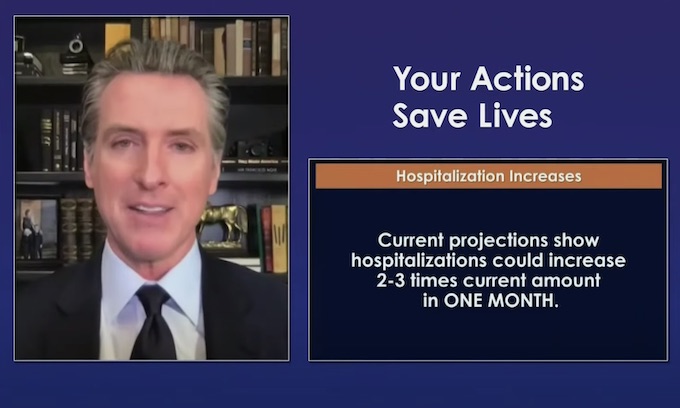

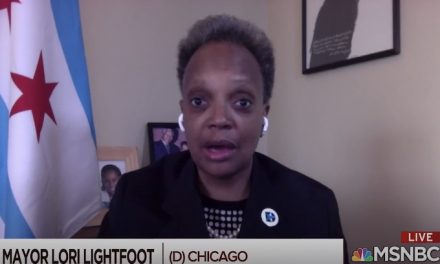

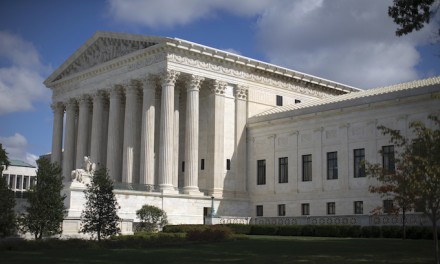






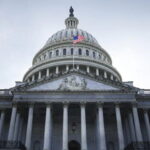



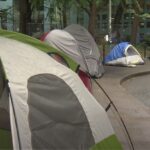
If a tree falls alone in the forest does it make a sound? If a wooden headed Pinocchio Socialist emperor wannabe orders you to imprison yourself in your own homes, but nobody listens or pays attention, does it make sense? Since California emptied the Prisons and insane asylums right before the election, I’m sure there will be no shortage of beds for the hordes of imaginary COVID victims that will mysteriously disappear when Biden and the two Democrat Senators in Atlanta get seated in office, and Trump’s Warp speed vaccines kick in. Another Democrat fear offered tempest in a tea pot where WE THE PEOPLE are supposed to drink the cool-aid of their tempestuous implied threats to riots and burning cities, followed by the Democrat inspired criminals running free and amok while those of Strength and innocence capable of opposing them are locked in their own homes like sheep in their pens destined to be imaginarily, sexually politically, and medially reidentified as scape goats.
Times like this, that BIG QUAKE we keep being promised will hit, needs to happen.. AND SEND LA INTO THE OCEAN!
Gavin boy, you are the one that should be tried in a court of law for having been a super spreader of Covid while at the French Laundry party.
I believe this calls for a citizen’s arrest and a quarantine for ten years at a prison near you, with solitary confinement during that time.
Mere jail time for these abject traitors, is too SOFT.. IMO THEY ALL need a week in the gallows, followed by a PUBLIC grusome execution.. AND THEIR HEADS spiked all around the white house fence.
If everything is getting so out of control, as they’re saying, how come we’re not setting up all those field hospitals and putting those hospital ships on each coast like we did during the summer? This is bs.
As Mark Twain said, There is no difference between politicians and diapers and they should be changed often. Thinking about Nuisance getting into Congress or even worse the White house, is beyond frightening.
Since you liberals have a one party communist state in California, just stay at home, the rest of your lives. You will not have to vote anymore, because you have a communist dictator named Gavin Newsom. Gavin must be in “Russia collusion”, with Putin. That is what happens when one gives away their freedom to the Democrat communist party. Keep teaching communism in schools, fools!!!!!!
They voted for it.. I HAVE NO SYMPATHY what so ever, for commiefornia.
Gotta do something to keep the eyes of the natives off of the china corruption sandal.
also remember trump is still president also.
so the propaganda flows freely.
For how much longer though? COURT after court are dumping trump lawsuits.. AND state after state is certifying the steal…
So now Californians you will be punished for not listening and obeying your god. If you ppl continue you take this garbage, you deserve it.
Time for some civil disobedience, long overdue. Call it a “peaceful protest” and remind the imperial pooh-bahs that they’ve said protestors are exempt from shutdown edicts.
Got that right… there should be at least 50 thousand people just milling around the Newsom compound at all times…. 24/7…. and “mostly peaceful”.
Peaceful, by carrying their peacemakers locked and loaded and in plain view for all to see, as is our Constitutional right. Don’t count on the emasculated cops to protect you. Those left would probably join in.
AHH, but as we saw with all the ANTI lock dwn protests we already saw, THOSE PROTESTS ARE NOT ‘exempt’. ONLY THE ANTIFA/BLM ones were.
Remember, RULES FOR THEE, but not for me.
Is it possible that Californian’s all suffer from sun stroke? It appears they accept so much BS that they acquired a taste for it and now enjoy it more than ever.
More like they all got a brain eating disease, from all the water.
MORE and more, i spend hours, day dreaming that the infinity gauntlet/stones were real, and i could just SNAP OUT of existance, all commucrats, marxists, communists, islamists and socialists.